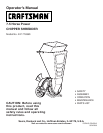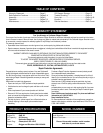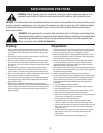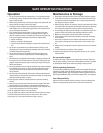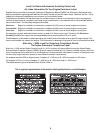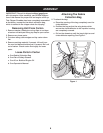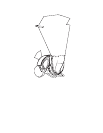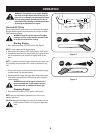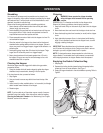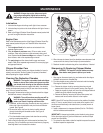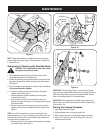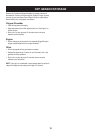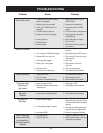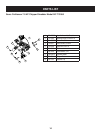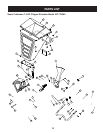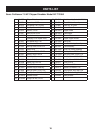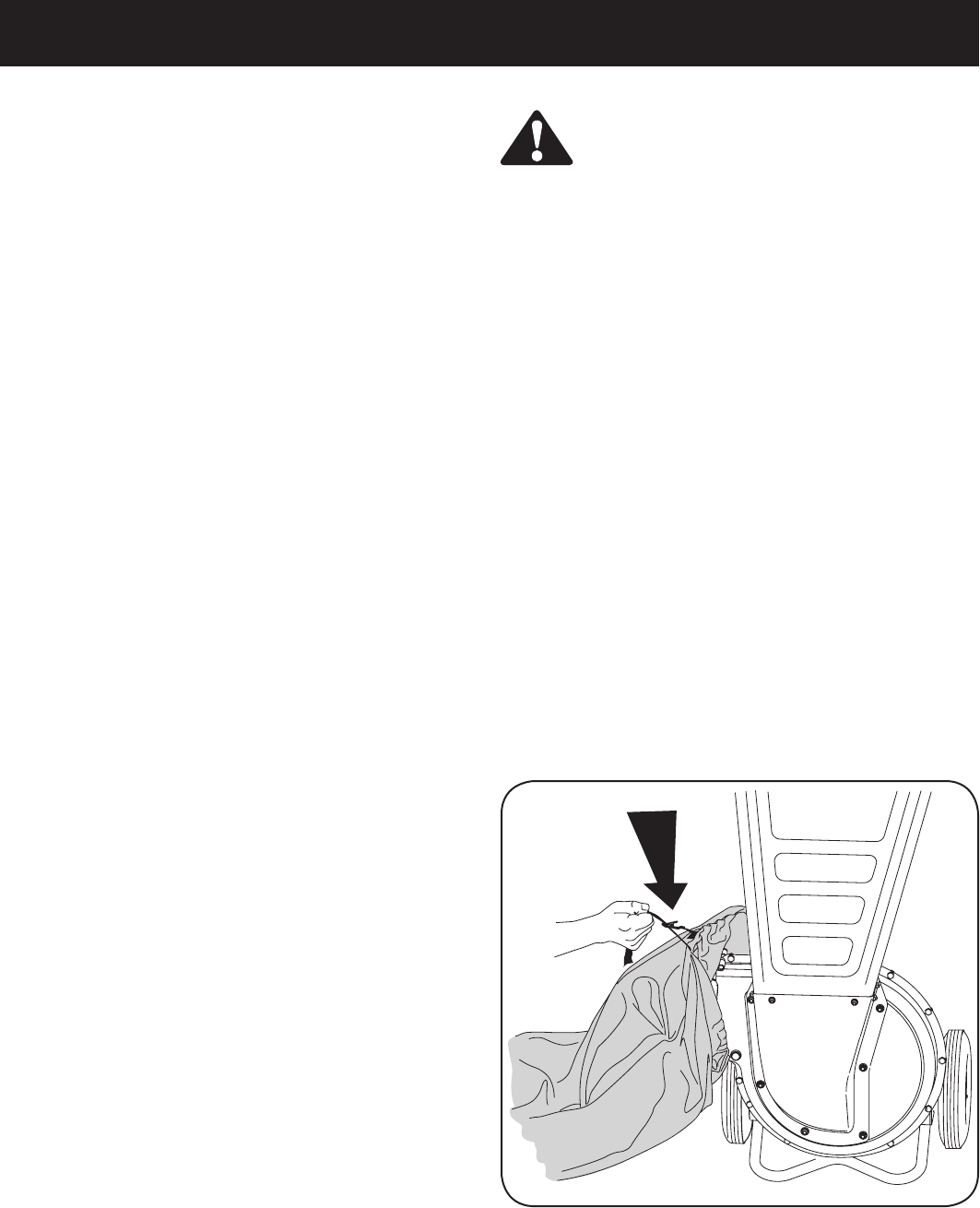
Figure 7
Shredding
Yard waste such as leaves and pine needles can be placed in the
hopper for shredding. After material has been processed by the shred-
der blade and flails, it will be forced out of the chute deflector, and, if
attached, into a debris collection bag.
Observe the following guidelines when shredding yard debris:
1. Never attempt to shred material other than normal yard debris
(leaves, twigs, pine cones, etc.).
2. Avoid shredding fibrous plants such as tomato vines until they are
thoroughly dried out. Fresh vines do not shred well and tend to
wrap themselves around the impeller and flails.
3. Place reasonable amounts of debris into the hopper at a time. Do
not overload the hopper.
4. Allow the material in the hopper to be drawn into the blades and
shredded before adding additional debris to the hopper. Failure to
due so may result in a clogged hopper, clogged chute deflector or a
stalled engine.
5. Avoid placing twigs longer than 24 inches into the hopper. Twigs
longer than 24 inches may result in a clogged hopper.
6. Never place branches with a diameter greater than 1/2-inch in
the hopper. Doing so can result in serious damage to the unit’s
shredder blade, flails or impeller.
Clearing the Hopper
Should the hopper become clogged with debris during operation,
proceed as follows:
1. Grasp the handle with both hands and gently agitate the chipper
shredder to help loosen debris, drawing it into the impeller.
If the clog does not clear, proceed as follows:
1. Stop engine.
2. Use your hands to remove any debris found near the top of the
hopper.
3. Use a branch (or other available device, i.e. broomstick) to dislodge
debris located toward the base of the hopper.
4. Restart engine.
NOTE: If you’re unable to pull the starter rope as a result of accumu-
lated debris near the impeller, follow instructions under the heading
Cleaning the Reduction Chamber in the “Maintaining Your Chipper
Shredder” section of this manual.
Chipping
WARNING: Never operate the chipper shredder
without chipper chute lowered into the operating
position.
Branches up to 2” in diameter can be fed into the chipper chute.
Observe the following guidelines when chipping branches:
1. Keep both hands firmly on the branch as you feed it into the chipper
chute.
2. Never feed more than one branch into the chipper chute at a time.
3. Never feed anything other than branches (or wood) into the chipper
chute.
4. Apply intermittent pressure (force, in short pulses) while feeding
larger (2-inch diameter) branches into the chipper chute, to avoid
bogging or stalling the engine.
IMPORTANT: Never feed branches with a diameter greater than
two (2) inches into the chipper chute. Doing so can result in serious
damage to your unit’s chipper blades, flails or impeller.
NOTE: For best performance, always operate the unit with sharp
chipper blades. If a noticeable loss in performance is encountered
while chipping branches, the chipper blades should be replaced.
Emptying the Debris Collection Bag
1. Stop engine.
2. Squeeze the locking buckle release the bag’s drawstrap before
loosening it from the chute deflector. See Figure 7.
3. Empty the bag and reattach to the chute deflector opening. Refer to
Figure 2.
9
OPERATION



